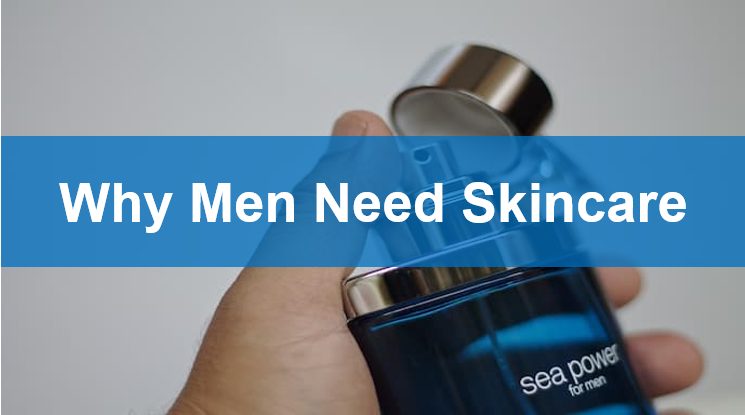
- HOME
- Cosmetic OEM Lab
Skincare used to be considered a women’s matter, not something for men. However, times have changed. Men have skin too—and that skin also needs care and protection. In recent years, the demand for men’s skincare products has grown significantly. Although the men’s skincare market is still smaller than the women’s, it is gaining momentum rapidly. This growing trend presents a great opportunity for those looking to launch their own skincare brand, especially with products designed specifically for men.
In today’s article, I’ll explore why skincare is important for men, what steps men should take in their daily skincare routine, and what types of products could become the “hero items” in your brand lineup. From cleansers and moisturizers to aftershaves and sunscreens, understanding the key needs of men’s skin is essential.
It’s also crucial to recognize that not all skin is the same. Skin characteristics vary from person to person—whether oily, dry, sensitive, or combination—and this applies to men as well. Tailoring your product development to these different skin types can give your brand a competitive edge and help build customer loyalty.
Whether you’re developing a single hero product or a full men’s skincare range, this emerging category offers plenty of room for innovation and growth.
Contents

Obviously, men have skin too, and just like women, it needs proper care and attention. When men neglect skincare, they are more likely to experience issues such as dryness, wrinkles, irritation, and in more serious cases, even skin conditions like acne or an increased risk of skin cancer due to sun damage.
In this section, I will explain in more detail why skincare is essential for men. I’ll also highlight some of the most common skin concerns men face. Understanding these points can help you identify which issues to focus on when developing your products—and ultimately, help you define your target customer more clearly.
Did you know that men’s skin actually produces more sebum than women’s? On average, the amount of sebum secreted daily is about twice that of women. This is especially true in the T-zone—the area from the forehead down to the nose—which tends to be particularly oily. If this excess sebum isn’t properly removed, it can clog pores and lead to breakouts, blackheads, and other skin issues.
However, despite the oily appearance, men’s skin can actually be surprisingly dry on the inside. Men’s skin is generally thicker than women’s, with more active sebaceous glands and a rougher keratin layer. This combination can create the illusion of well-moisturized skin, when in fact the deeper layers may be dehydrated. Many men are unaware of this imbalance, believing that shiny skin equals healthy skin—but that’s far from the truth.
Adding to these challenges is daily shaving, which acts as a form of micro-exfoliation. While it helps remove dead skin cells, it also strips the skin of moisture and can cause irritation, redness, and sensitivity if not properly cared for.
Not only that, but especially because of these factors—high sebum production, internal dryness, and irritation from shaving—it’s clear that men need a dedicated skincare routine.
Skincare is often misunderstood when it comes to men. Here are some common myths that may be holding men back from taking proper care of their skin — and why they should be rethought:
Men’s skin has unique needs, and ignoring skincare based on outdated myths can lead to long-term issues. Whether it’s oiliness, dryness, sensitivity from shaving, or signs of aging — men benefit just as much from a consistent and thoughtful skincare routine as anyone else.
While men’s skin may be naturally thicker and oilier, that doesn’t mean it’s free from concerns. In fact, men face a unique set of skin issues — often due to daily habits like shaving, lack of routine, or environmental exposure. In this section, we’ll take a closer look at some of the most common skin concerns and what can be done about them
Skin Irritation from Shaving: Shaving is a daily ritual for many men, but it’s also one of the most common causes of skin irritation.
These issues can be made worse by Using dull or dirty blades, skipping a proper shaving lubricant and rushing through the process without prepping the skin
| Acne & Breakouts |
|
| Dry or Dehydrated Skin |
|
Triggers of dry skin in men is cold, dry weather, long, hot showers, harsh soaps or alcohol-based products, skipping moisturizer due to a fear of feeling greasy.

In this section, I will introduce the essential steps of a basic skincare routine for men. Whether your brand is targeting beginners or seasoned skincare users, understanding these fundamental steps will help you identify which products to develop, and which categories may have the strongest market demand. A solid grasp of these routines can also assist in creating clear messaging, educating your customers, and even exploring future product expansion.
For many men, cleansing is often the first — and sometimes only — step in their skincare journey. It’s a simple yet essential routine that not only cleanses and refreshes the skin, but also removes excess oil, impurities, and pollution, supports the skin’s natural pH balance, and preps the skin for any additional skincare products that follow.
If you’re developing a skincare line for men, a cleanser is an excellent product to launch first. It’s a familiar concept, easy to introduce to new users, and offers immediate benefits that can encourage continued use.
Below are some of the recommended key ingredients to consider when formulating men’s cleansers.
| Charcoal |
|
| Salicylic Acid (BHA) |
|
| Aloe Vera |
|
A bit same as above, exfoliation is a crucial — yet often overlooked — step in men’s skincare. It helps to remove dead skin cells, excess oil, and impurities that can clog pores, dull the complexion, and lead to breakouts or rough texture. By incorporating exfoliation into their weekly skincare routine, men can enjoy brighter, smoother, and clearer skin.
For men who shave regularly, exfoliating can also reduce the chances of ingrown hairs and razor bumps by keeping hair follicles clear and skin even.
It’s recommended to exfoliate 2–3 times per week, preferably in the evening after cleansing, to avoid over-exfoliating and to give the skin time to recover overnight.
Key Exfoliating Ingredients to Consider:
| Bamboo Powder |
|
| Lactic Acid (AHA) |
|
After cleansing and exfoliating, moisturizing is the next essential step in any effective skincare routine — especially for men. While men’s skin naturally tends to produce more oil due to higher sebum levels, hydration is still critical to maintain a healthy, balanced, and youthful complexion.
A good moisturizer helps to lock in hydration, restore the skin barrier, and protect the skin from environmental stressors. Choosing the right texture and formulation based on skin type — oily, dry, sensitive, or combination — is key. For many men, especially those with oily or acne-prone skin, a lightweight, non-greasy moisturizer is often ideal.
Recommended Ingredients for Men’s Moisturizers
| Hyaluronic Acid |
|
| Glycerin |
|
| Shea Butter |
|
The final and absolutely essential item to highlight in any men’s skincare routine is SPF (Sun Protection Factor). Maintaining healthy, youthful-looking skin isn’t just about hydration or cleansing—broad-spectrum SPF sunscreen is one of the most powerful tools to protect the skin from premature aging, sunburn, and even skin cancer. Regardless of your skin tone, daily use of sunscreen is critical. Many people mistakenly believe that darker skin tones don’t need SPF, but UV rays affect all skin types, causing damage deep within the skin over time.
Even if you stay indoors most of the day, incidental sun exposure—like during your commute or while sitting by a window—can accumulate and harm your skin. While some moisturizers include SPF, it’s often not enough to provide all-day protection. For optimal defense, it’s important to reapply sunscreen throughout the day, especially if you sweat or spend time outdoors. Complementing your SPF use with other sun protection measures—such as wearing a hat, sunglasses, or staying in the shade during peak hours—will provide comprehensive skin protection.
Recommended Ingredients for SPF Products:

In the final section, I’d like to share the characteristics of different skin types. When creating your own skincare brand, it’s essential to understand the unique traits and needs of each skin type. This knowledge will help you make more informed decisions about product formulation, marketing strategies, and customer targeting. By tailoring your messaging and offerings to suit each skin type, your brand will be more likely to resonate with your audience and stand out in a competitive market.
Let’s explore each skin type in detail.
Oily skin is very common among men and requires targeted care to maintain cleanliness, minimize pore clogging, and reduce the shiny appearance caused by excess sebum. While it might seem counterintuitive, hydration remains a critical part of the routine for oily skin. Proper hydration helps balance oil production and prevent the skin from overcompensating by producing even more sebum. Choosing lightweight, non-comedogenic products that control oil without stripping the skin is key to achieving a clear, fresh complexion.
Combination skin presents a unique challenge as it involves caring for two different skin types on the face simultaneously. The T-zone (forehead, nose, and chin) tends to be oily and prone to clogged pores and blemishes, while the cheeks and other areas may be dry, sensitive, or prone to redness. Effective skincare for combination skin focuses on balancing oil control in the oily areas while providing gentle hydration and calming care for the drier, more sensitive zones. Using multi-targeted products or a combination of treatments tailored for each area can help maintain overall skin health and appearance.
Dry skin is characterized by tightness, flakiness, redness, and a rough texture, often becoming easily irritated when exposed to harsh environmental factors or unsuitable products. For men with dry skin, gentle care is essential to restore and maintain the skin’s natural moisture barrier. Overly aggressive cleansers or treatments can worsen dryness and sensitivity, so it’s important to use nourishing and soothing ingredients that lock in hydration and protect the skin from further moisture loss.
Mature skin, typically seen in men over 40, demands special attention to hydration, nourishment, and protection against signs of aging. As men age, their skin naturally loses elasticity and collagen production slows, leading to wrinkles, fine lines, and a decrease in skin density. Effective skincare for mature skin should focus on replenishing moisture, boosting collagen synthesis, and shielding the skin from environmental damage. Ingredients that promote skin regeneration, improve firmness, and provide antioxidant protection are essential to help maintain a youthful, vibrant complexion.

Men’s skincare is a growing and promising market, driven by the unique needs and challenges of male skin. Despite lingering myths, men experience concerns such as excess oil, dehydration, shaving irritation, acne, and sun damage—making a proper skincare routine essential. By focusing on key steps like cleansing, exfoliating, moisturizing, and sun protection, and by tailoring products to different skin types, brands can build trust and stand out in a competitive market. The men’s skincare segment holds great potential for innovation, brand growth, and customer loyalty. I hope this overview supports you on your private label journey!
Inquiry
For further information, please contact us.